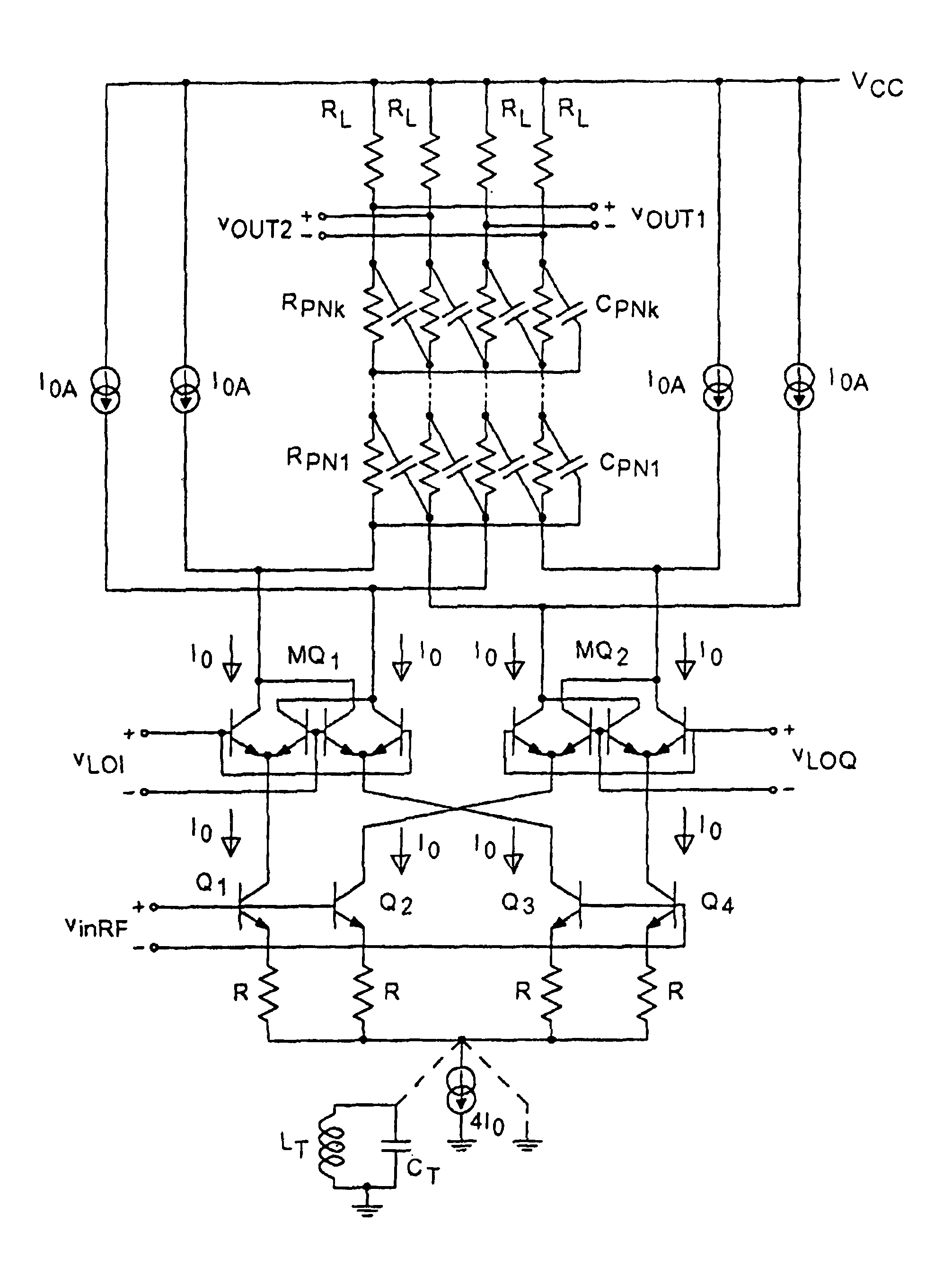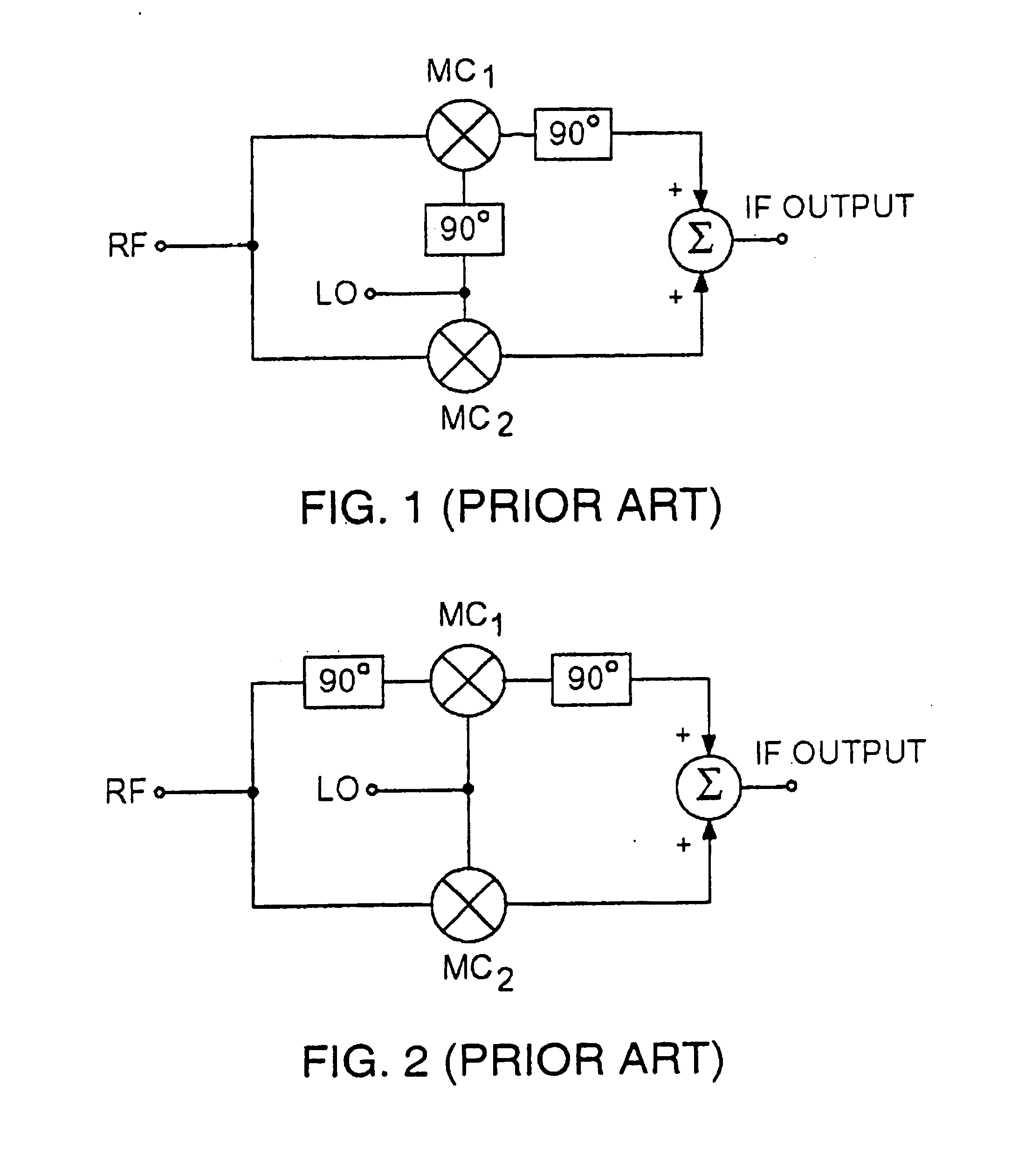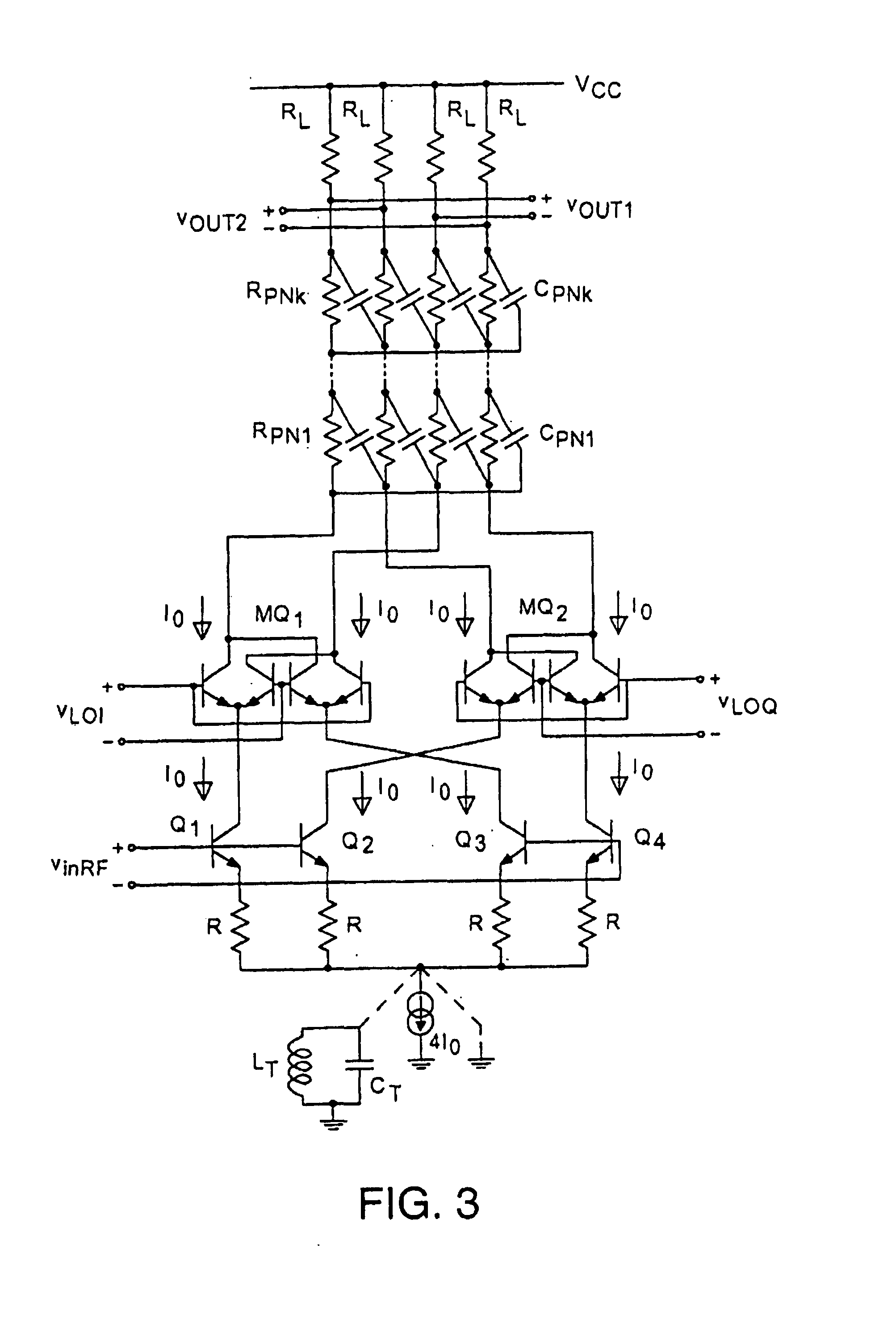Image-rejection mixer having high linearity and high gain
a mixer and linear technology, applied in the direction of oscillator generators, transmission noise suppression, electrical apparatus, etc., can solve the problems of limiting the maximum achievable value, limiting the available headroom to the output stage, and difficult to achieve, so as to achieve high conversion gain, high linearity, and high gain
- Summary
- Abstract
- Description
- Claims
- Application Information
AI Technical Summary
Benefits of technology
Problems solved by technology
Method used
Image
Examples
Embodiment Construction
[0021]In the description to follow, references may be made to local oscillator signals, or inphase and quadrature local oscillator signals, such as LOI, and LOQ shown in the various Figures to be described herein. It is to be understood that such references are for purposes of convenience and not for purposes of limitation, as such local oscillator signals, by way of example, may be derived from an oscillator accompanying the image-rejection mixer, or may be made available locally from a remote source, such as over a wire connection or a wireless connection, or may even be recovered from the RF signal itself, all as is well known in the art. The source of the local oscillator signal is dependent on the application of the present invention, not the invention itself, and is simply to be distinguished from the RF signal itself.
[0022]A first embodiment of the image-rejection mixer in accordance with the present invention is shown in FIG. 5. In this embodiment, the mixing cells (Gilbert ...
PUM
 Login to View More
Login to View More Abstract
Description
Claims
Application Information
 Login to View More
Login to View More - R&D
- Intellectual Property
- Life Sciences
- Materials
- Tech Scout
- Unparalleled Data Quality
- Higher Quality Content
- 60% Fewer Hallucinations
Browse by: Latest US Patents, China's latest patents, Technical Efficacy Thesaurus, Application Domain, Technology Topic, Popular Technical Reports.
© 2025 PatSnap. All rights reserved.Legal|Privacy policy|Modern Slavery Act Transparency Statement|Sitemap|About US| Contact US: help@patsnap.com



